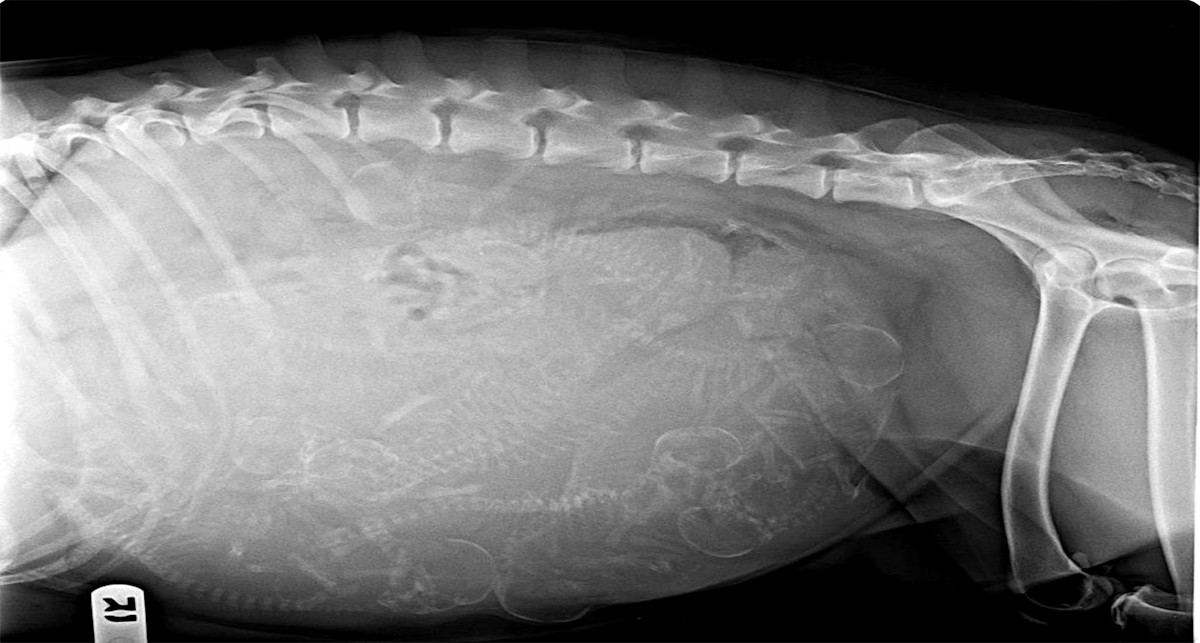
Training and fieldwork creates a special kind of bond between a dog and its owner. But our four-legged friends often find themselves in situations where they need your help. Our new Ask A Vet series delivers advice directly from a professional, working veterinarian. Have a question about your dog? Shoot an email to themeateater@themeateater.com and we’ll dig into the concern.
When making decisions regarding the care of a bird dog, veterinarians and dog owners must carefully weigh the risks and benefits of every option. Guided by an oath to promote animal welfare, we as vets tend to not subject our patients to excessive risk if the payoff doesn’t warrant a gamble with health.
As a vet that works with a large number of breeders, I’m often asked about the safety of pregnancy x-rays (radiographs) and what risks are associated with subjecting undeveloped and rapidly growing fetuses to radiation. These are valid questions, and I’m happy to offer up my expertise when a breeder inquiries about radiographs as a diagnostic tool for an upcoming litter. I usually follow up with a few questions of my own to ascertain the owner’s objectives in taking an x-ray.
What Is a Canine Pregnancy X-Ray?
Perhaps we should state what may not be obvious to all my clients: A radiograph is an image created when a burst of x-rays (radiation) are fired at a special film, either old-school x-ray film or more commonly these days, a digital plate. X-rays are similar to light waves in that they pass through certain materials (metal, bone, muscle, air) differently, creating an image with the unique gradients of white to black we’re all familiar with.
I teach veterinary students canine reproduction in the third year of their curriculum, and the answer I provide for this question revolves around cultivating breeder peace of mind.
The radiograph’s utility lies in its ability to help us count puppies. Most of our bird dog breeds are naturally excellent mothers and rarely encounter complications during whelping (delivery). However, very small litters—especially when there’s only a single fetus—or extremely large litters can contribute to a higher risk of dystocia, or difficult birth.
If the litter is of medium size, somewhere between 5 and 7 pups in a typical bird dog litter, having an accurate count also gives breeders a benchmark for when they can relax following a stressful, hand-wringing whelping. Waiting around and wondering whether another puppy is on the way can be agonizing.
Developing puppies, especially early in their 9-week gestation, are mostly water and cartilage. The conversion of cartilage to bone (mineralization) begins towards the last two weeks of gestation and peaks during the final week before birth. As more mineralization takes place, the white bones of these pups become more conspicuous among the darker greys of the mother’s belly in the radiograph.
Radiographs are not necessary to diagnose a pregnancy. In fact, you can get an answer to that question in one of the ways it’s done in human medicine, through an ultrasound. A vet who’s handy with an ultrasound can confirm pregnancy in as little as 18 days from ovulation.
An x-ray won’t give you that information until practically a month later, well after she’s starting to look outwardly pregnant.
Are Dog X-rays Safe?
Anytime radiation is involved, there will be some risk, otherwise the staff wouldn’t gown up in lead aprons before taking radiographs. The vast majority of veterinarians agree that an accurate puppy count and the information it provides breeders is worth some exposure to radiation.
We’re all bound by the idea of ALARA (as low as reasonably achievable), which means we only expose our patients to as little radiation risk as necessary to achieve our diagnostic objectives.
By the time the pups are old enough to be detected on a radiograph, much of the early, critical development has already taken place. By this milestone, the pups have minimal risk of developmental issues due to radiation.
Nay-sayers often cite an older study that suggests a high risk of cancer later in life for pups exposed to radiation in utero. However, veterinary radiologists point out negative effects emerge from cumulative radiation, and this study measured the effects of radiation levels roughly equivalent to 100 consecutive radiographs. A pregnancy radiograph series requires only one or two images at most.
I’d wager far more puppies are lost to dystocia than exposure to microdoses of radiation from a pregnancy radiographs. In my mind, it’s totally worth the risk.
If my bird dog breeding clients are still risk-averse to the idea of a radiograph, much of the litter size diagnostics can be performed with ultrasonography. I can reliably spot a “singleton” in a litter, and if clients are comfortable with some ambiguity about the final count, I’m usually successful at ballparking moderate litter size within 2 or 3 pups in most situations.
The ultrasound has the added advantage of helping us monitor fetal heart rate, calculate gestational age, determine fetal sex and evaluate the health of the placenta and uterus. The reality is that the risks are negligible, aside from the hit to your wallet.



